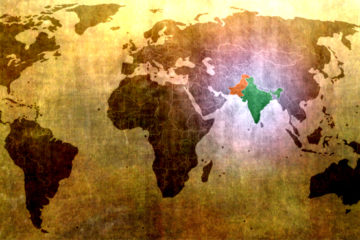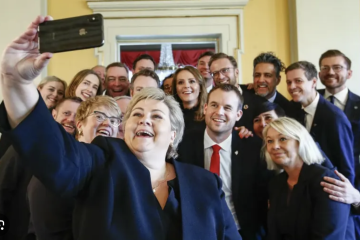The Crisis of Migrant Labour in India during Covid-19
The Indian Government’s initial response to Covid-19—a stringent nationwide lockdown which commenced with an intimation period of only “four hours”—was hailed by the World Health Organisation as “timely and tough.” However, this international acclaim overlooked the disastrous result of the rushed lockdown on India’s migrant workforce. For them, the restrictions imposed by the lockdown has endangered their access to healthcare, housing, food and social security, which has further pushed their lives in precarity. Immediate action is needed from the Central Government to tend to their current needs and provide them with long-term economic stability. Statistics of Migrant Labour in India As per the census of 2011, India has approximately 453.6 million internal migrants. From this, the migrant workforce is estimated to be around 100 million. The Economic Survey of 2017 estimated …
Dissecting the Hindu Chauvinism in India’s COVID-19 Response
The global Covid-19 pandemic has led an alarming transformation of the world’s social, economic, and political life. In that context, it is important to understand how the pandemic has added momentum to India’s inertial slide into a full-fledged Hindu majoritarian state. In India, Prime Minister Narendra Modi’s Hindu nationalist government has seized upon this public health emergency as an opportunity to strengthen its hold on Indian society. In this article, we examine how the Covid-19 pandemic has provided Modi’s single-party national government with fertile ground for advancing its Hindu nationalist project. Vigilante Blame Culture The global spread of Covid-19 has provided Hindutva organisations, which seek to merge Hindu and Indian identities, with a fresh target for their nationalist propaganda. In line with …
The Ineffective International Response to the Rohingya Crisis ─ A Paradox
The longstanding Rohingya crisis in Myanmar has generated massive human rights violations, becoming a humanitarian disaster. It is not only an internal matter for Myanmar, as it has destabilized the regional tranquility of South and Southeast Asia and triggered a global outcry. In this article, I will illustrate why major states, such as China, India, Russia, and the US, have adopted a policy of overlooking the Rohingya crisis. I have intentionally excluded the potential for a prominent leadership role from the already fragile Muslim world because of both their general absence from the central world leadership and their preoccupation with their own domestic crises. The Rohingya are the largest community among eight prominent Muslim groups in Myanmar and have lived in its Rakhine State (formerly Arakan) for generations. They are envisaged by the nation’s government and Buddhist population as illegal Bengali immigrants who came from what is …
What Delhi’s Elections Mean for the Role of Women in Indian Politics
On 11 February 2020, Arvind Kejriwal led the Aam Aadmi Party (AAP) to an emphatic win in the Delhi state elections, banking 62 out of 70 assembly seats. The result has been touted as a resounding rejection of the ruling Bharatiya Janata Party’s (BJP) divisive and vitriolic campaign. The elections saw BJP ministers threatening with statements such as, “shoot the traitors” and inciting the crowds by saying “they [Muslims] will rape your daughters.” This aggressive and violent patriarchal posturing hurt the BJP who have been reduced to 11.4% of the State Assembly. Female voters in particular played a pivotal role in this dramatic result, as they shifted en masse to AAP just months after the BJP swept the national elections. Women Reject BJP According to a post-poll survey by CSDS-Lokniti, the majority of the gap between …
Brexit and the Future of India-UK Ties
The impact of Brexit on India depends upon the general election of the UK scheduled for December 12, 2019. With Conservatives in power, Brexit seems to bring opportunities for India on many fronts. However, if the Labour Party comes into power, it may reverse that impact. The reason is the varied ideologies of both the parties concerning India. Historically, Indian National Congress (INC) had taken the Conservative Party with a pinch of salt. The racial slurs by Prime Minister Winston Churchill of the Conservative Party on the Bengal famine of 1943-44 and his remarks during the debate of the Independence Bill in British Parliament in 1947 had turned Indian Prime Minister Jawaharlal Nehru and the INC against the Conservatives. However, …

Prolonging Conflict: Global Powers’ Involvement in the India-Pakistan Rivalry
The India-Pakistan conflict is one of the most enduring rivalries of the post-World War era. The two nuclear states have fought four wars, and smaller-scale skirmishes are common occurrences. Since the nuclearization of the two countries in 1998, the nuclear stalemate has been one of the most important facet of this ongoing rivalry. Apart from Kashmir, over which three wars have been fought, constant cross-border terrorist attacks in India have severely limited and disrupted initiatives to defuse the situation. Recently, tensions have flared up because of the decision by the Indian government to abrogate Article 370 of the constitution which gave the state of Jammu and Kashmir special status within the Indian republic. This move has infuriated Pakistan, vowing to …

Arming without Aiming? India’s Quest for Material Power and International Influence
In terms of material military power, India does not lag far behind the traditional materially powerful states. The country ranks among the top in terms of the size of and investments in its army, air force, and navy. Furthermore, in 1998, India revealed to the world that it possessed nuclear weapons. Yet, while India has sufficient material power to be categorized as a powerful state, the country does not always think and act like a materially powerful state. For India, more material power has not been necessarily enough to ensure greater international influence. Thus far, India can be accused of ‘arming without aiming’ in its quest for greater international influence. India’s Material Powers India’s raw military power is impressive. The …

The Scramble for Southeast Asia: ASEAN-Great Power Relations in an Increasingly Contested Region
As the world’s economic and geopolitical centre of gravity shifts eastwards, a scramble for Southeast Asia is underway as the great powers seek to expand and defend their influence in this dynamic region. This renewed great power competition demands that members of ASEAN (Association of Southeast Asian Nations) revise their approaches and rethink their relations to one another and others. Southeast Asia is a crucial node in China’s Belt and Road Initiative (BRI) while the ‘Quad’ of Japan, India, Australia and the US have announced the “Free and Open Indo-Pacific (FOIP)” initiative to balance Beijing’s growing influence. New powers have also begun to make their presence felt in Southeast Asia: South Korean President Moon Jae-in has proclaimed a “New Southern …









